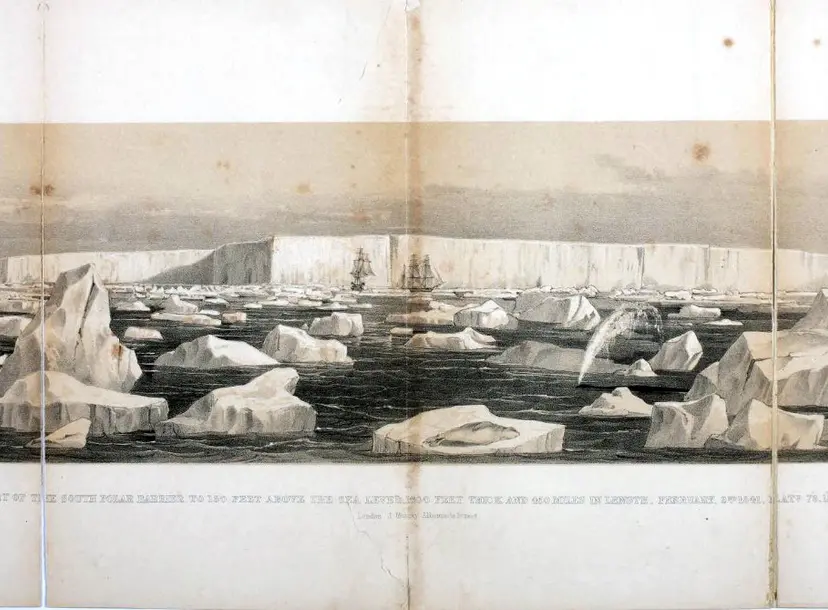While the story of the Longitude Prize has become famous, another epic saga of navigational science has largely been forgotten. A tiny watercolour from 1841, presented to the Royal Institution in 1907, came to hand in our archive and gives us a glimpse of it.
Painted in Antarctica, it shows a tall ship in an icy scene under a clear blue sky. We can see a halo around the sun and, above it, a second bright arc. These are phenomena produced by atmospheric ice crystals. A caption tells us that the leader of a magnetic survey expedition himself, Captain James Clark Ross (1800–1862), painted the little scene.
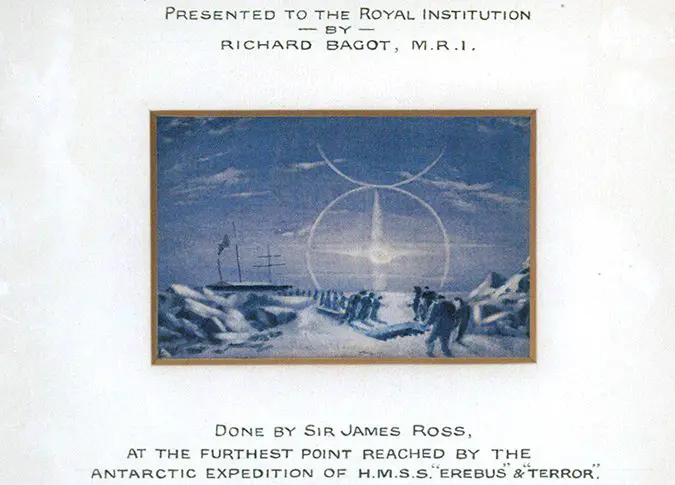
What was this expedition looking for? After the Longitude Prize was won in 1773 it was all very well being able to tell your latitude, longitude and direction by means of the sun and marine chronometer. But in the far north (or south) it is quite possible to go for a long time seeing nothing above the horizon but cloud. Life could depend on that archaic instrument, the magnetic compass. It points at magnetic north which could be many degrees from true north. And it might even point askew if something else disturbs it, such as an ore deposit or the nails in a ship’s wooden hull.
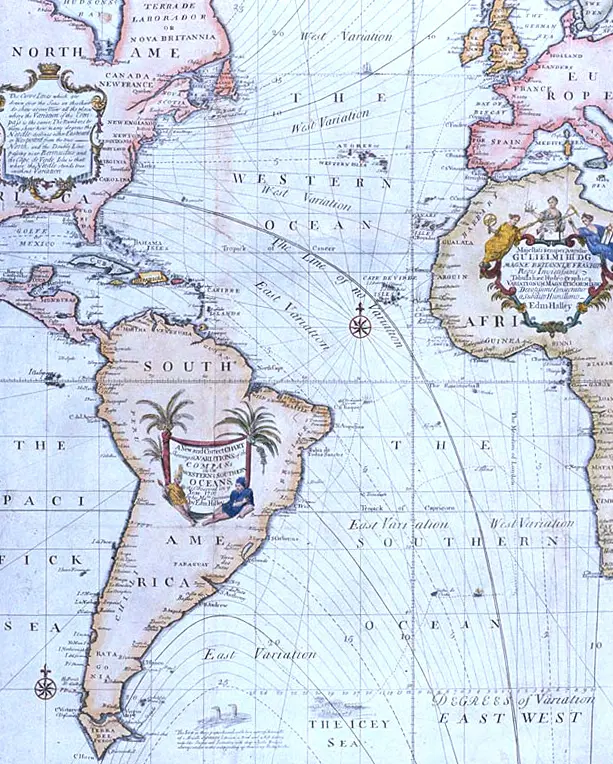
The concept of a magnetic field was not generally understood before the second half of the 19th century. So, what people actually measured at first was simply the declination, the difference between true north and magnetic north. Edmond Halley (he of the comet) made the first such map in 1701 covering the Atlantic in command of HMS Paramore. But Halley knew that the magnetic pole drifted slowly. He even attempted to use that drift to date Stonehenge.
Prussian explorer Alexander von Humboldt (1769–1859) also developed a particular interest in geomagnetism. He travelled extensively in search of measurements and helped to spark an international race to master the subject. Magnetic observatories were established across Asia. In Britain Edward Sabine (1788–1883) stepped forward as the great champion of magnetic research. In 1852 he would discover a link between solar activity and terrestrial magnetism and eventually became President of the Royal Society. But before that, with Michael Faraday and Thomas Young, he became a scientific advisor to the Admiralty.
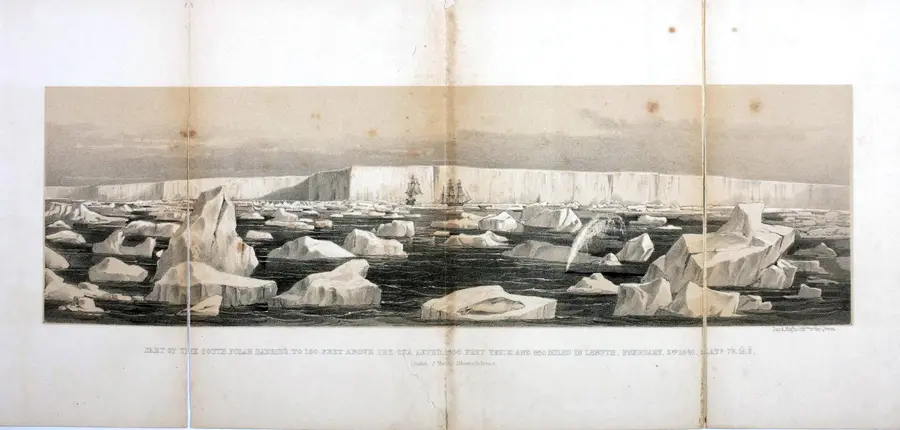
There was a long period of peace following war with the French, and officers in the Royal Navy had to find other ways to distinguish themselves such as in scientific endeavour. As a young man, in 1831, on an expedition in search of a North West Passage to India, naval commander James Clark Ross planted the flag for King William IV of Great Britain in the north magnetic pole. It was then at the northern edge of mainland Canada but, of course, the next day the pole had moved on. By 1839, with the support of Sabine, James Ross was leading his own expedition, this time to Antarctica, for the purpose of measuring more of the earth’s magnetic topography — the declination, intensity and inclination (angle with the vertical) of geomagnetism. He was also to set up permanent observatories on outlying British territory. It was hoped that the data would provide comparison with mathematical theories of geomagnetism, notable work having been done by Carl Friedrich Gauss (1777–1855).
‘the completeness and excellence of the instruments with which the expedition will be furnished will authorise the utmost confidence in the results obtained by Captain Ross’s well-known scrupulosity and exactness in their use’
If you look at a map of Antarctica you can now see the Ross Sea, Ross Island and the Ross Ice Shelf named from this very voyage. Although magnetism was the focus of the voyage there was scope to push out other frontiers of knowledge. This was a couple of years after Darwin returned home from HMS Beagle. Ross took with him his own young naturalist, Joseph Hooker (1817–1911), later one of Darwin’s closest allies in the debate following publication of On the Origin of Species. Hooker was to become Director of the Royal Botanical Gardens at Kew. The Ross expedition called on some of the latest advances in technology. There were magnetometers of course, but also Nathaniel Ward’s glazed cases for transporting live plant specimens, and tinned food. This did not preclude serving the odd bowl of penguin which ‘much resembled hare’. The expedition stores even included 2,453 pounds of pickled walnuts!
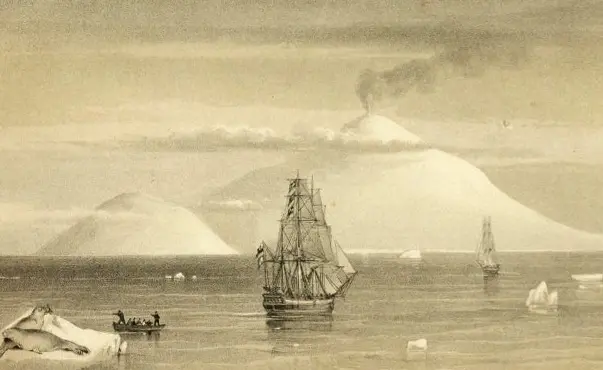
On 2nd February 1841 Ross’s expedition (he commanded HMS Erebus) reached its most southerly latitude, 78° at Ross Island. Ross mentions the following day lifting ice for the purpose of obtaining fresh water and this is apparently what we have in the foreground of our blue and white sketch. A block of ice has been cut from the floe and is being hauled back to the ship. Ross was not equipped to traverse the ice cap and had to turn back without reaching the south magnetic pole. Perhaps the voyage has not achieved lasting fame because it was successful, and because:
‘the execution of the service had been unattended by casualty, calamity, or sickness of any kind, and… every individual of both ships had been permitted to return in perfect health and safety.’
Laurence Scales is a volunteer working with the Ri Heritage and Collections team. He also leads unique and eclectic London tours focused on the curious history of science, invention, medicine and intelligence. He is a graduate in engineering and has worked in various technological industries.
